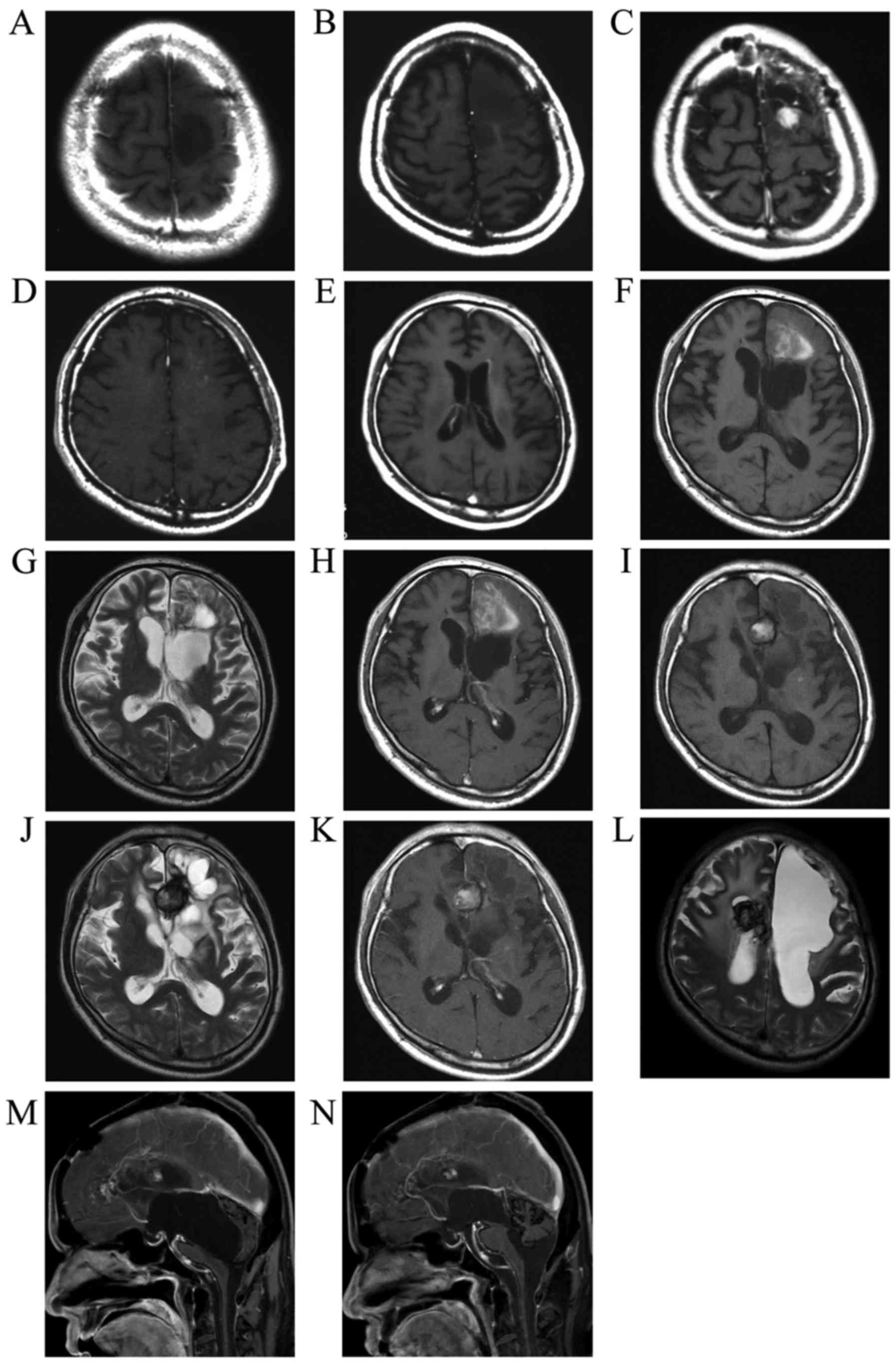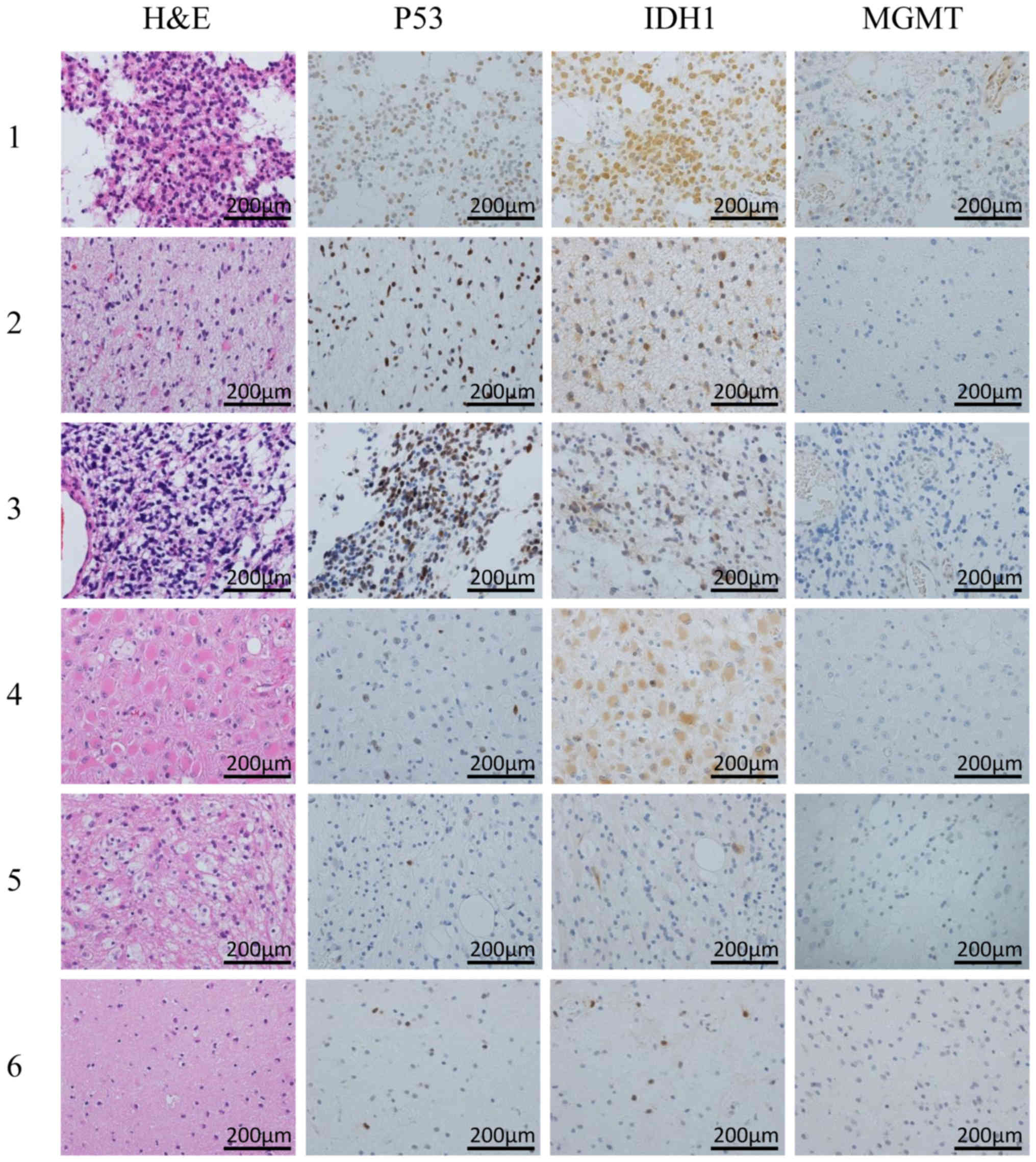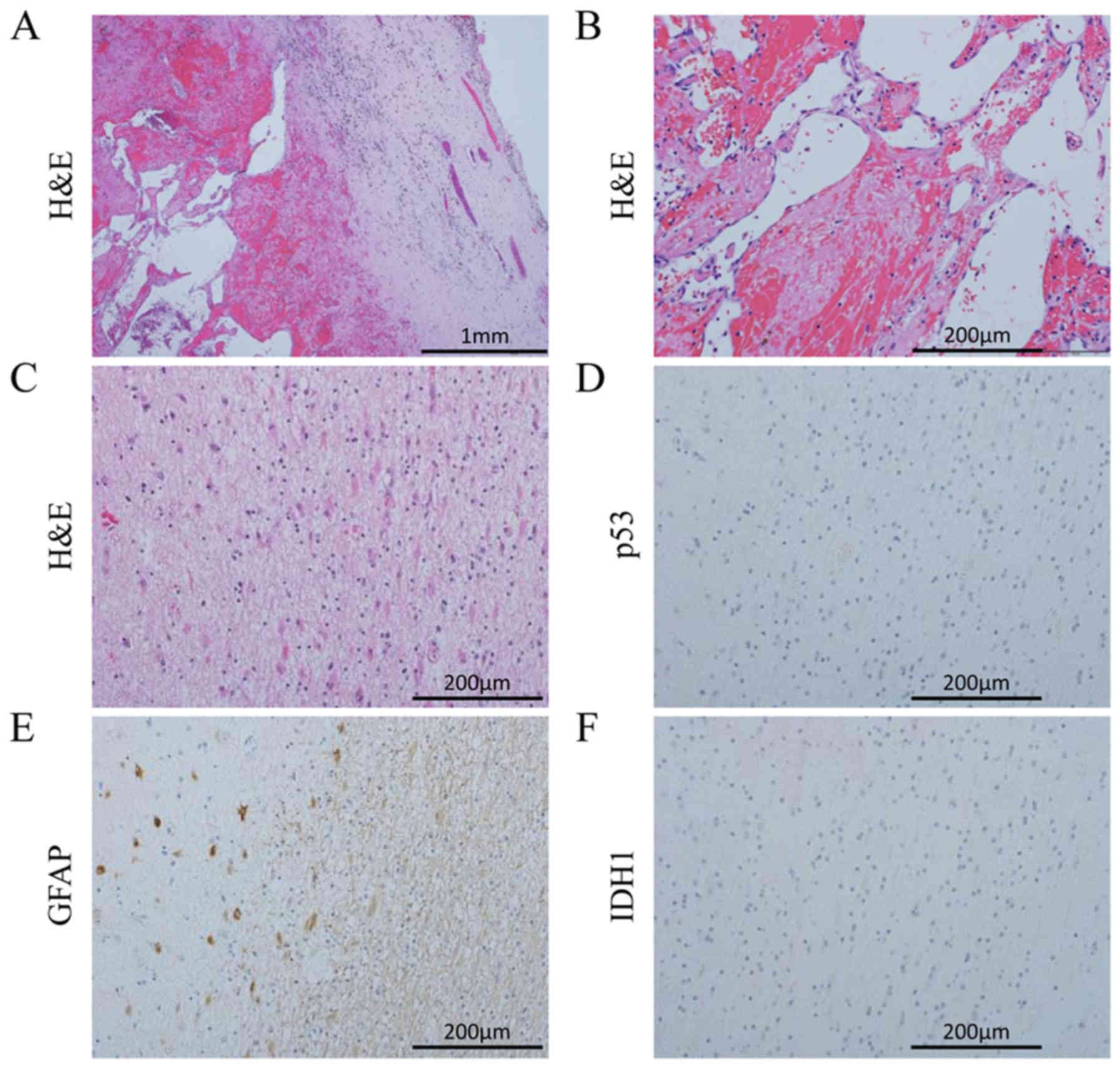|
1
|
Yung WK, Prados MD, Yaya-Tur R, Rosenfeld
SS, Brada M, Friedman HS, Albright R, Olson J, Chang SM, O'Neill
AM, et al: Multicenter phase II trial of temozolomide in patients
with anaplastic astrocytoma or anaplastic oligoastrocytoma at first
relapse. Temodal brain tumor group. J Clin Oncol. 17:2762–2771.
1999.PubMed/NCBI
|
|
2
|
Gilbert MR, Friedman HS, Kuttesch JF,
Prados MD, Olson JJ, Reaman GH and Zaknoen SL: A phase II study of
temozolomide in patients with newly diagnosed supratentorial
malignant glioma before radiation therapy. Neuro Oncol. 4:261–267.
2002. View Article : Google Scholar : PubMed/NCBI
|
|
3
|
Hirano H, Yunoue S and Arita K: Long-term
temozolomide treatment in two patients with high-grade glioma (in
Japanese with English abstract). CP Neurosurgery. 18:886–892.
2008.
|
|
4
|
Yan H, Parsons DW, Jin G, McLendon R,
Rasheed BA, Yuan W, Kos I, Batinic-Haberle I, Jones S, Riggins GJ,
et al: IDH1 and IDH2 mutations in gliomas. N Engl J Med.
360:765–773. 2009. View Article : Google Scholar : PubMed/NCBI
|
|
5
|
Arita H, Narita Y, Yoshida A, Hashimoto N,
Yoshimine T and Ichimura K: IDH1/2 mutation detection in gliomas.
Brain Tumor Pathol. 32:79–89. 2015. View Article : Google Scholar : PubMed/NCBI
|
|
6
|
Capper D, Sahm F, Hartmann C, Meyermann R,
von Deimling A and Schittenhelm J: Application of mutant IDH1
antibody to differentiate diffuse glioma from nonneoplastic central
nervous system lesions and therapy-induced changes. Am J Surg
Pathol. 34:1199–1204. 2010. View Article : Google Scholar : PubMed/NCBI
|
|
7
|
Scoccianti S, Magrini SM, Ricardi U, Detti
B, Krengli M, Parisi S, Bertoni F, Sotti G, Cipressi S, Tombolini
V, et al: Radiotherapy and temozolomide in anaplastic astrocytoma:
A retrospective multicenter study by the central nervous system
study group of AIRO (Italian Association of Radiation Oncology).
Neuro Oncol. 14:798–807. 2012. View Article : Google Scholar : PubMed/NCBI
|
|
8
|
Hau P, Koch D, Hundsberger T, Marg E,
Bauer B, Rudolph R, Rauch M, Brenner A, Rieckmann P, Schuth J, et
al: Safety and feasibility of long-term temozolomide treatment in
patients with high-grade glioma. Neurology. 68:688–690. 2007.
View Article : Google Scholar : PubMed/NCBI
|
|
9
|
Mannas JP, Lightner DD, Defrates SR,
Pittman T and Villano JL: Long-term treatment with temozolomide in
malignant glioma. J Clin Neurosci. 21:121–123. 2014. View Article : Google Scholar : PubMed/NCBI
|
|
10
|
Takano S, Kato Y, Yamamoto T, Kaneko MK,
Ishikawa E, Tsujimoto Y, Matsuda M, Nakai K, Yanagiya R, Morita S,
et al: Immunohistochemical detection of IDH1 mutation, p53, and
internexin as prognostic factors of glial tumors. J Neurooncol.
108:361–373. 2012. View Article : Google Scholar : PubMed/NCBI
|
|
11
|
Kawano H, Hirano H, Yonezawa H, Yunoue S,
Yatsushiro K, Ogita M, Hiraki Y, Uchida H, Habu M, Fujio S, et al:
Improvement in treatment results of glioblastoma over the last
three decades and beneficial factors. Br J Neurosurg. 29:206–212.
2015. View Article : Google Scholar : PubMed/NCBI
|
|
12
|
Novelli PM, Reigel DH, Gleason P Langham
and Yunis E: Multiple cavernous angiomas after high-dose
whole-brain radiation therapy. Pediatr Neurosurg. 26:322–325. 1997.
View Article : Google Scholar : PubMed/NCBI
|
|
13
|
Maeder P, Gudinchet F, Meuli R and de
Tribolet N: Development of a cavernous malformation of the brain.
AJNR Am J Neuroradiol. 19:1141–1143. 1998.PubMed/NCBI
|
|
14
|
Baumgartner JE, Ater JL, Ha CS, Kuttesch
JF, Leeds NE, Fuller GN and Wilson RJ: Pathologically proven
cavernous angiomas of the brain following radiation therapy for
pediatric brain tumors. Pediatr Neurosurg. 39:201–207. 2003.
View Article : Google Scholar : PubMed/NCBI
|
|
15
|
Aguilera D, Tomita T, Goldman S and
Fangusaro J: Incidental resolution of a radiation-induced cavernous
hemangioma of the brain following the use of bevacizumab in a child
with recurrent medulloblastoma. Pediatr Neurosurg. 46:303–307.
2010. View Article : Google Scholar : PubMed/NCBI
|
|
16
|
Chourmouzi D, Papadopoulou E, Kontopoulos
A and Drevelegas A: Radiation-induced intracranial meningioma and
multiple cavernomas. BMJ Case Rep. 2013:pii2013.
|
|
17
|
Lew SM, Morgan JN, Psaty E, Lefton DR,
Allen JC and Abbott R: Cumulative incidence of radiation-induced
cavernomas in long-term survivors of medulloblastoma. J Neurosurg.
104:(Suppl 2). S103–S107. 2006.
|
|
18
|
Furuse M, Miyatake SI and Kuroiwa T:
Cavernous malformation after radiation therapy for astrocytoma in
adult patients: Report of 2 cases. Acta Neurochir (Wien).
147:1097–1101. 2005. View Article : Google Scholar : PubMed/NCBI
|
|
19
|
Fukushima S, Narita Y, Miyakita Y, Ohno M,
Takizawa T, Takusagawa Y, Mori M, Ichimura K, Tsuda H and Shibui S:
A case of more than 20 years survival with glioblastoma, and
development of cavernous angioma as a delayed complication of
radiotherapy. Neuropathology. 33:576–581. 2013.PubMed/NCBI
|












